HUNTING THE JOULE, PART ONE
The search for South Africa’s lost electric car
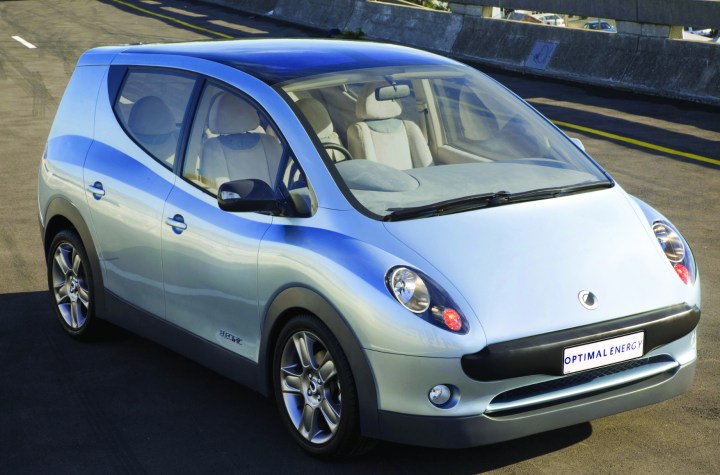
Just two years after Elon Musk began producing electric cars, a South African team had beautifully designed prototypes on the floor and was ready to go. It didn’t materialise. The sad story of thwarted innovation has been told, but what happened to the cars?
The internal combustion engine is a dinosaur future generations will probably view with horror. It got us around but damn near wrecked the planet with its emissions. That much was clear to two university friends who had done innovative things with their mechanical engineering degrees after graduation.
Kobus Meiring had been programme manager in the creation of the formidable Rooivalk helicopter gunship, then moved on to manage the SA Large Telescope (SALT) being built in the Karoo. He asked his former Stellenbosch housemate Jian Swiegers to join him.
When the programme moved to its next phase – the Square Kilometre Array Observatory – they decided they needed a change. As Swiegers put it, “You only build one telescope. It’s a very aggressive race against time and exhausting.”
Liftoff
In the can-do attitude with which South Africans are often credited, Meiring suggested they build an electric car.
The pair formed Optimal Energy in 2005 with another SALT engineer, Gerhard Swart, and former helicopter test pilot Mike Lombard.
The Industrial Development Corporation (IDC) provided around R300-million and the Department of Science and Technology’s Innovation Fund added R15-million to build a prototype.
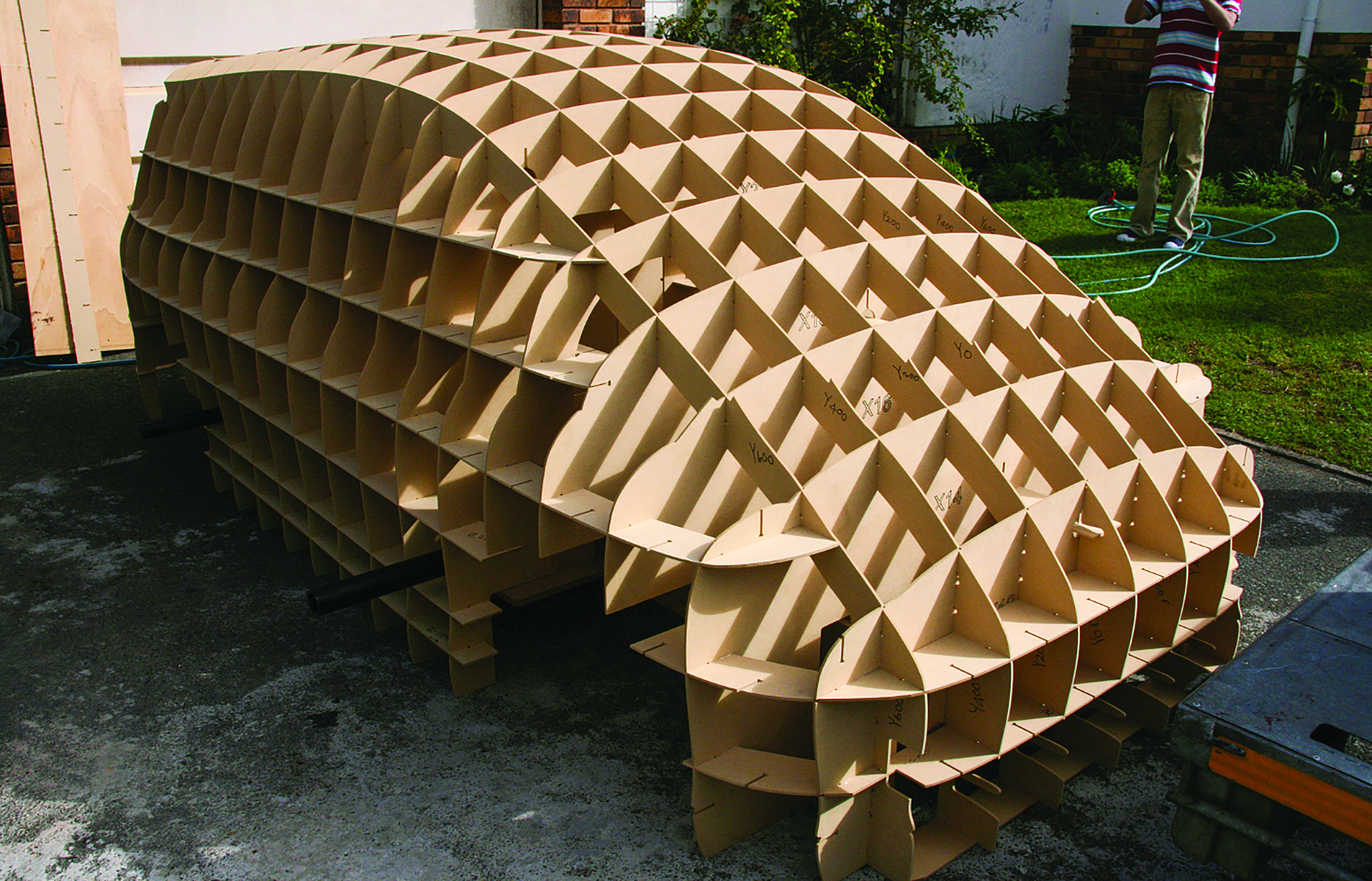
The ‘eggbox’ formation to create the prototype shell. (Photo: Keith Helfet)
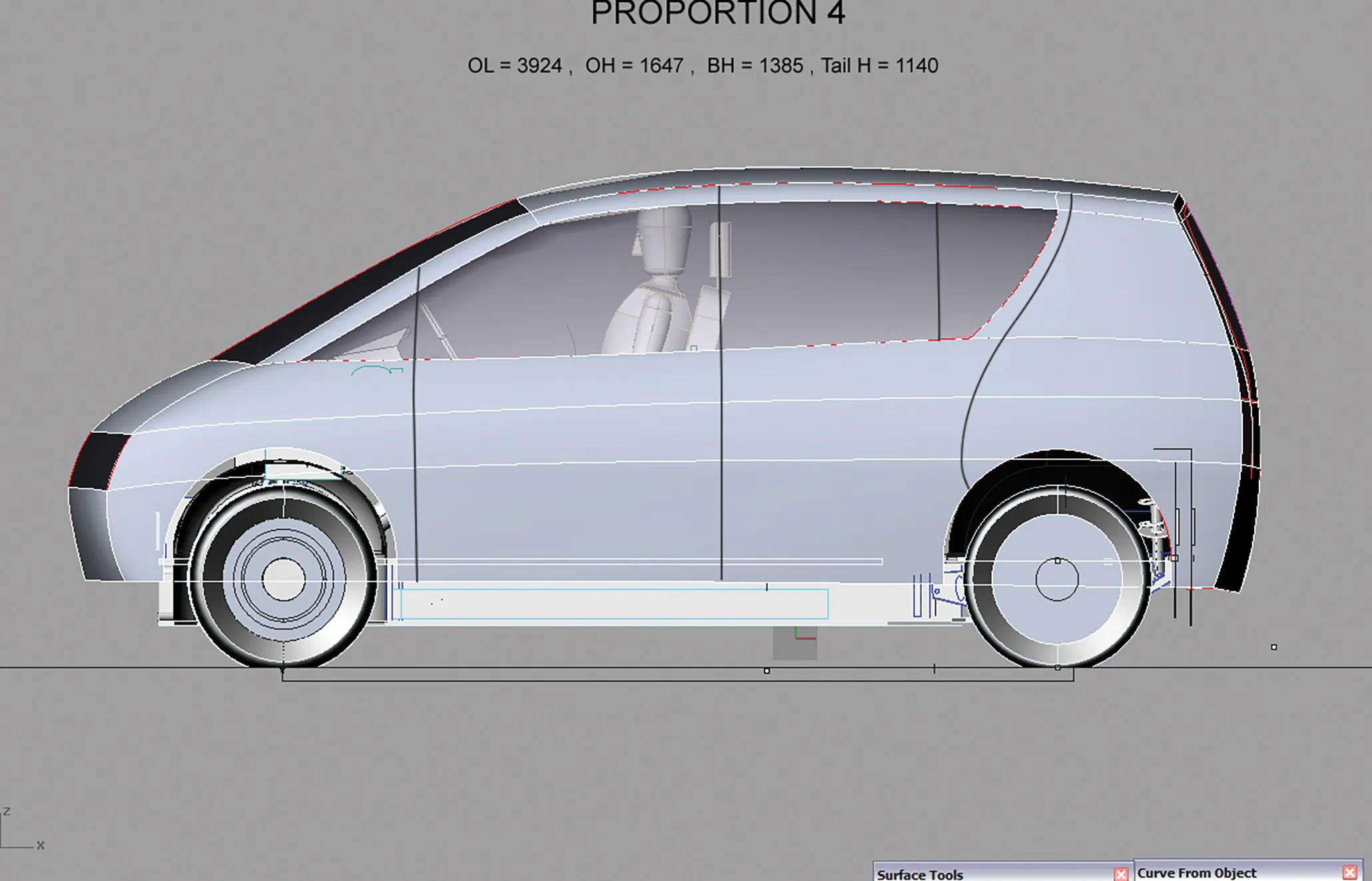
In the planning stage. (Photo: Keith Helfet)
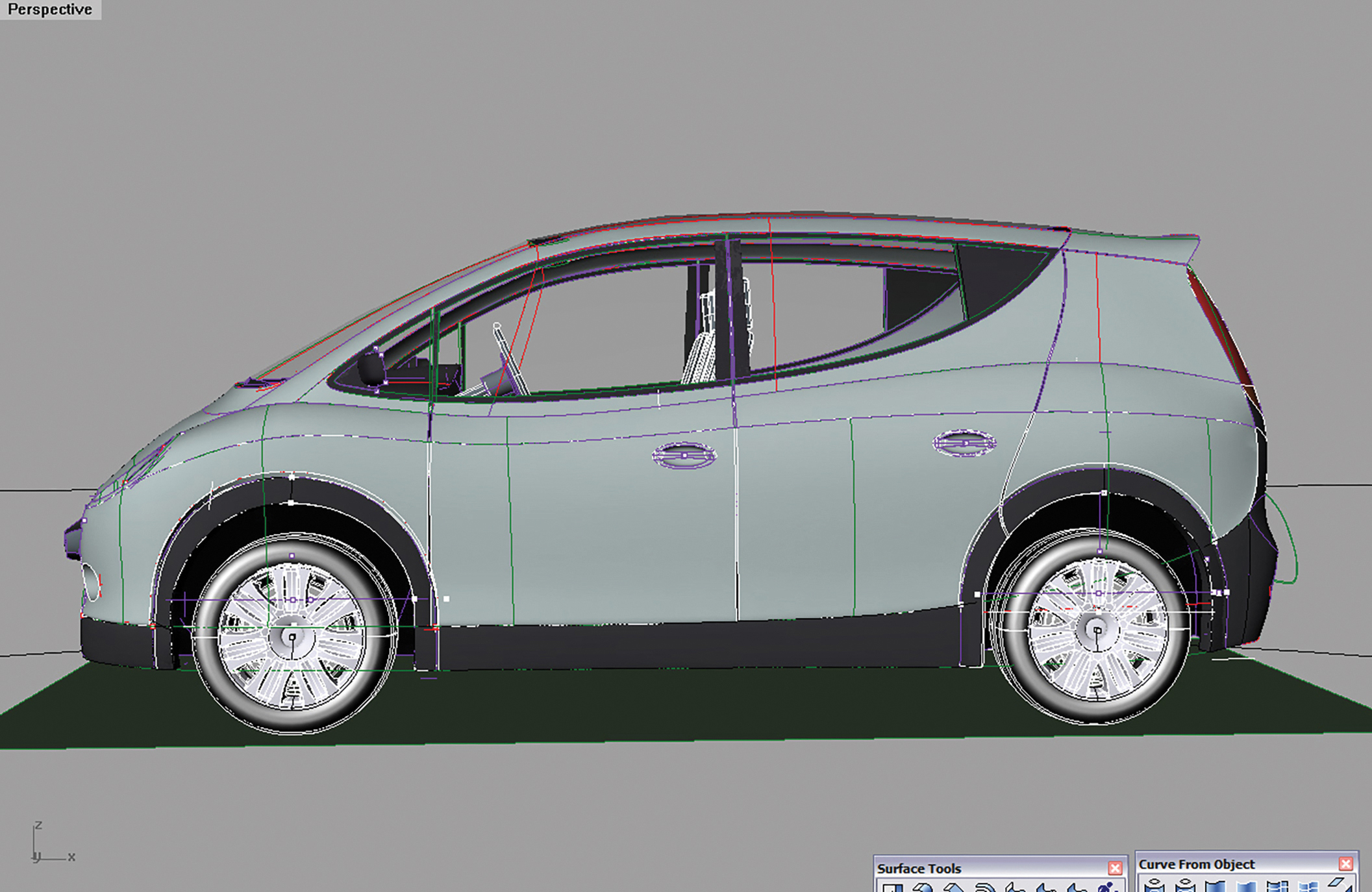
In the planning stage. (Photo: Keith Helfet)
According to Swiegers, they had the good fortune to meet the chief designer for Jaguar, Keith Helfet, who was born in Calvinia, lived in Pinelands and studied at UCT. He had designed the legendary XJ220 Jaguar and other muscle cars.
“He laughed at our initial body design, but said he’d always wanted to do something in South Africa,” said Swiegers.
By October 2008, with a team consisting largely of engineers, they unveiled the Joule in shell form at the Paris Motor Show.
“The South African EV market was limited,” Swiegers explained, “so we had to aim at the budding European market. I think the timing was perfect.”
At the time, the only major car manufacturer developing a four-door EV for potential mass adoption was Nissan, which was working on the Leaf.
Tesla began production of its first EV – the two-door Roadster sports car – that same year. However, it would take another four years to mass produce its first four-door cars.
But, it appears, the timing wasn’t perfect. The show featured a high number of hybrid and electric vehicles which led a New York Times blogger to ask: “Who killed the non-electric cars?” He called them hideous.
“Only time will tell if any of these arriviste electric carmakers will ever be heard from again.”
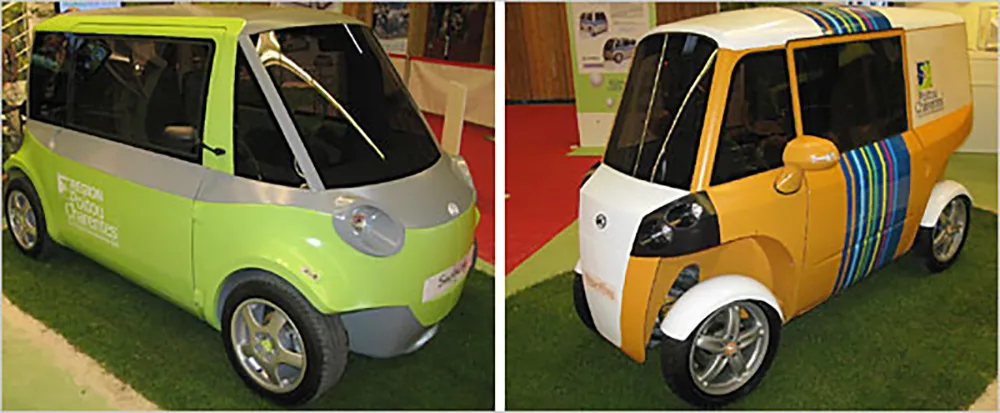
Beside other electric vehicles at the Paris Motor Show, the Joule looked like a swan. (Photo: Supplied)
In design terms, the Joule was a swan among ducklings and created a media buzz, but didn’t attract the hoped-for funding, according to Helfet. It didn’t help that it coincided with a global economic crisis flagged as the worst since the Great Depression in 1930.
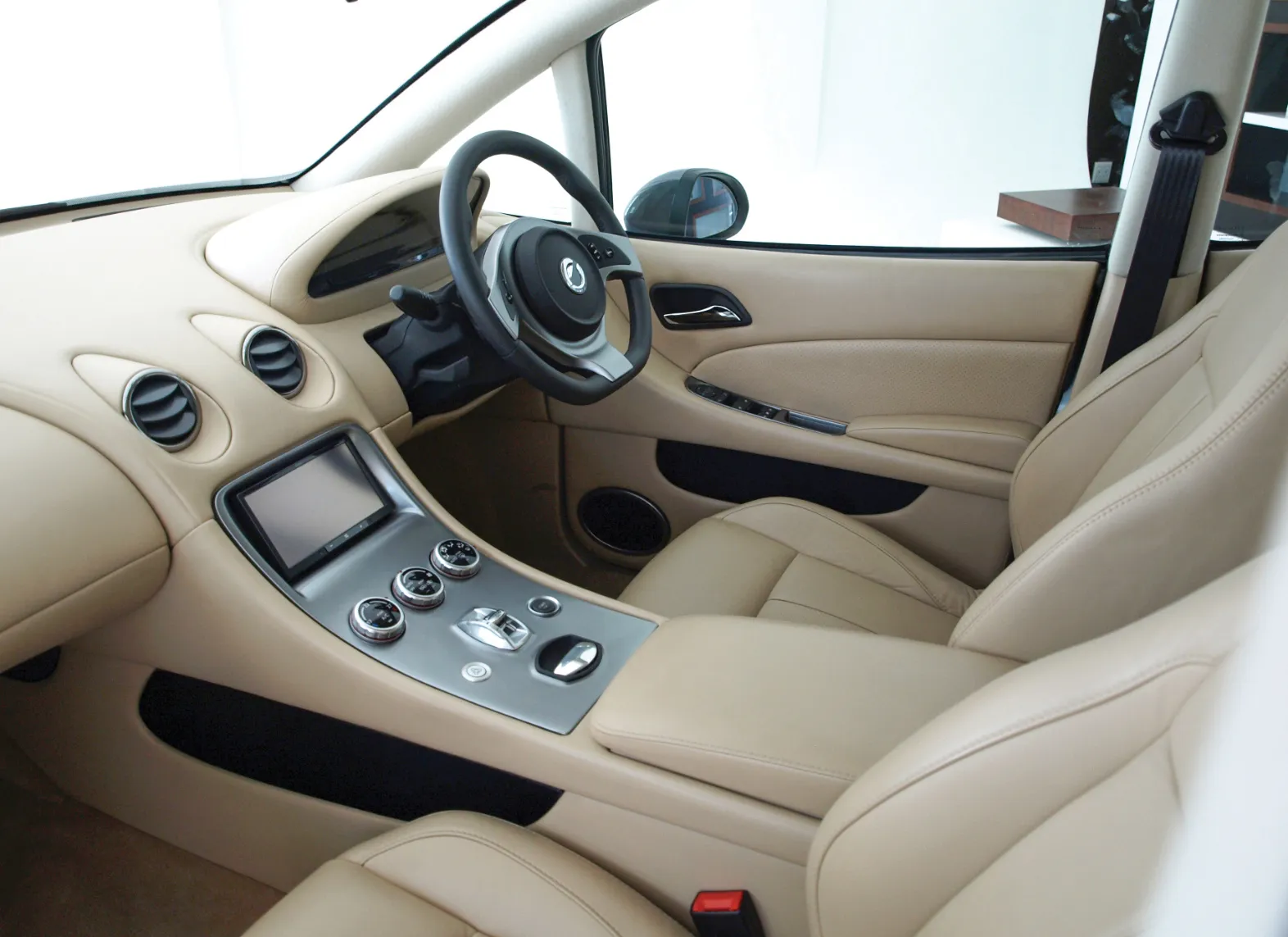
The Joule’s cool interior.(Photo: Keith Helfet)
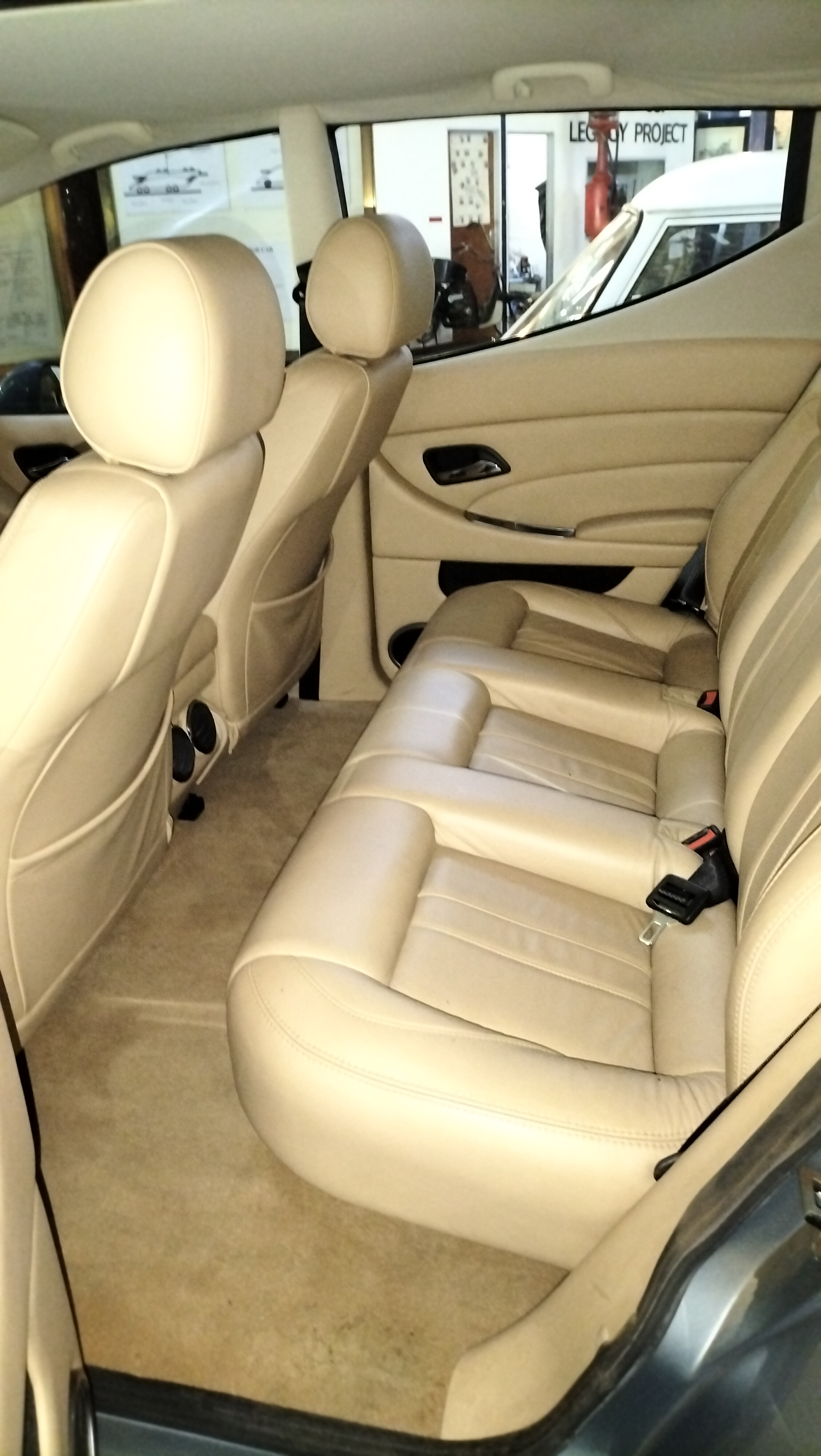
The Joule was an EV with a Jaguar-style interior. (Photo: Supplied)
Production began at a hi-tech facility near Port Elizabeth which was tasked with making a car for the forthcoming Geneva International Motor Show and four running prototypes.
The crash
At the time, Optimal Energy said full-scale production of the Joule would begin at the end of 2012, with cars in showrooms by mid-2013. It didn’t happen.
The IDC evidently got jittery. It may have been the global financial situation, a change of IDC staff which reallocated funding priorities, or the realisation that the cost of setting up production from the prototype could jump from R300-million to around R9-billion.
Read more in Daily Maverick: Lights go off on SA electric car project
“The IDC is the government body that’s supposed to invest in exactly this sort of thing,” said Swiegers.
“When they started acting in a not very constructive way, I think there must have been things happening in the background that weren’t ideal. The next step is huge. You need to understand the bigger picture and you need government support to start the motor business.
“You have to understand that you’re not going to make a lot of money early on, you need subsidies, you need support from government.”
The government was unwilling to provide the billions needed for mass production. Without government support, the Joule was dead and Optimal closed its doors in 2012.
The search
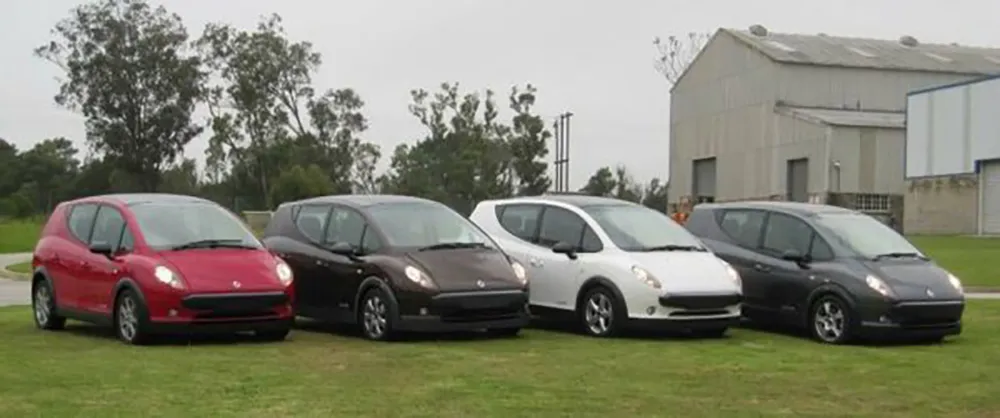
The only Joule prototypes produced. (Photo: Keith Helfet)
At the time there was a show “shell” and four working Joules.
A dinner-table question by one of the former engineers got our attention: “I wonder what happened to those Joules? Maybe South Africa’s first electric cars are still alive in some dark garage?”
Our Burning Planet decided to track them down.
A lead came from Jian Swiegers.
“They were built in Port Elizabeth. They were eventually donated to Nelson Mandela University by the Department of Trade and Industry.”
Their response to a request for information about the Joule felt protective:
“As starting point could please request that you elaborate on your request by answering the following questions:
- What is the objective of the story?
- Who is the intended target audience?
- What is your timeframe in terms of completing this initiative?
- What type of information are you looking for?”
Answering our response, eNtsa operations manager Nadine Goliath wrote: “The Joule vehicles associated to Nelson Mandela Metropolitan University (NMMU) have been decommissioned. uYilo is a national programme and currently the operational team. To my knowledge there is an automotive museum in Johannesburg that hosts one of the Joules.” She provided a web address.
That led to the James Hall Museum of Transport in Gauteng. Among the many vehicles pictured was a shiny silver Joule. Bingo! Further inquiries proved less exciting. It was the show shell. So back to Port Elizabeth.
Concerted online digging produced a photograph of three perky, colourful Joules which had been taken at NMMU; then a downer: a photo of burned-out garages. In a student demonstration, the Joules had been torched.
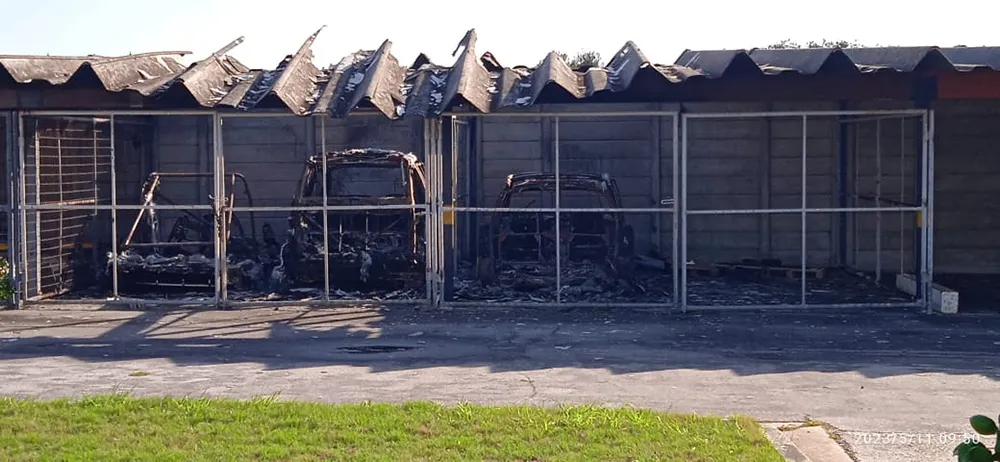
Burnt Joules at Nelson Mandela Metropolitan University. (Photo: Supplied)
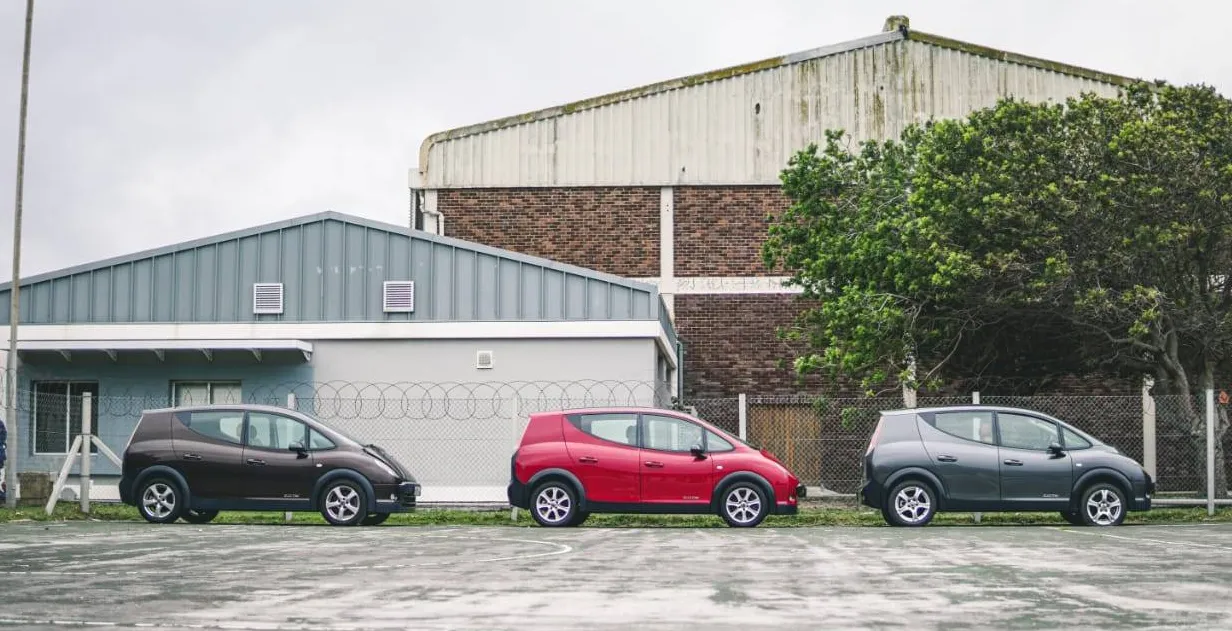
Joules before they were burnt at NMMU. (Photo: Supplied)
There had been four working prototypes: there was hope. Someone in the emails going back and forth mentioned that a Joule may be with the CSIR in Pretoria.
Christa van der Merwe of the CSIR was more than helpful:
“All of the Joules were donated to uYilo at NMMU. The Technical Innovation Agency funds uYilo. We recently inquired to TIA about the possibility of exploiting the Joule IP to produce vehicles in partnership with other entities. We saw a Joule at uYilo on a site visit two weeks ago.”
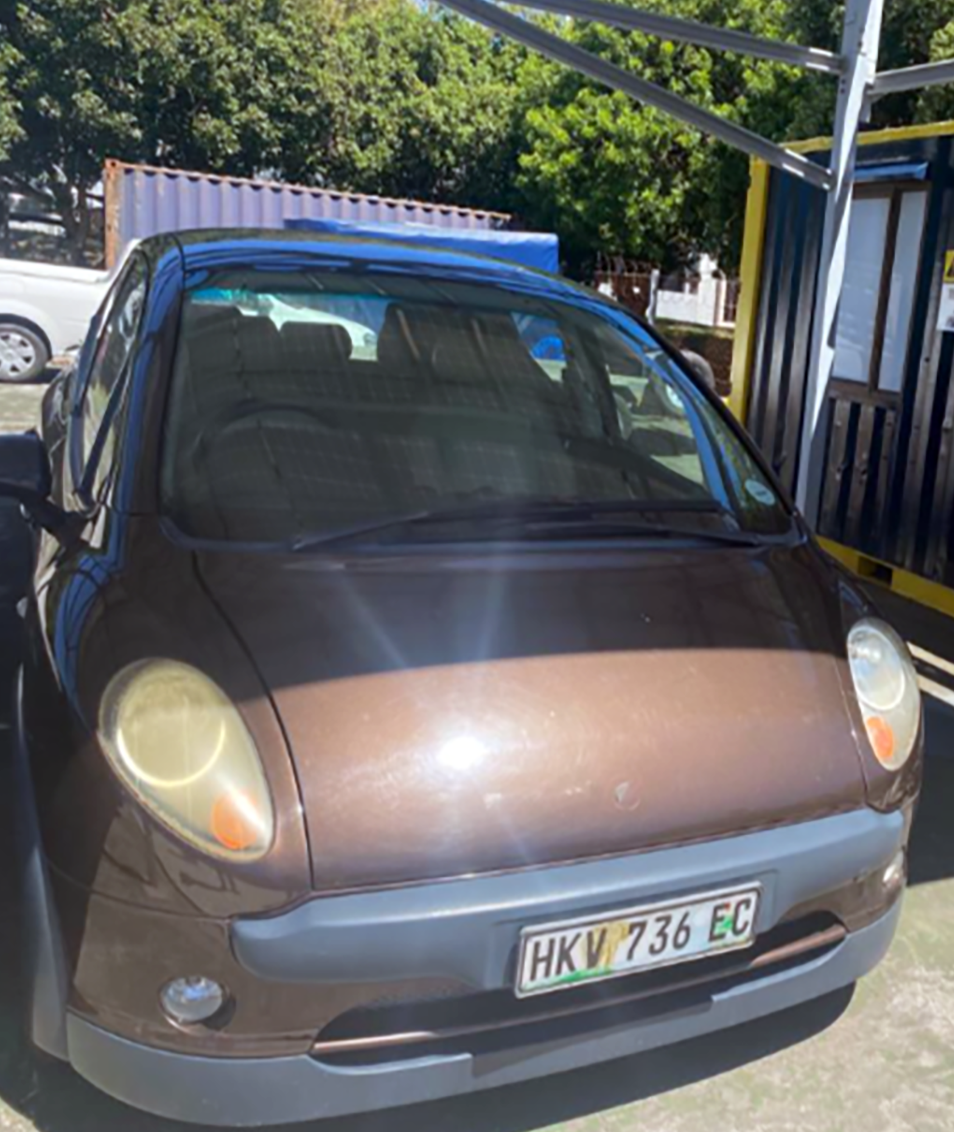
The last prototype. (Photo: Supplied)
With the email came a photograph of a dull, sad-looking Joule of indeterminable colour. We sent it to Nadine Goliath of eNtsa and said we’d be in Port Elizabeth and would like to see the car. Her reply became even more protective:
“As mentioned, the vehicles associated to Nelson Mandela University have been decommissioned and not available. [Christa] upon her visit to uYilo was on an exploratory visit and images taking were not intended for further distribution and merely for knowledge transfer purposes with CSIR who our institution has an MoU/MoA which there is a clause related to NDA (non-disclosure agreement).”
Our reply was roughly: “Come on Nadine, it’s only an old car we want to look at!” Her reply bordered on bizarre:
“Let there be no allusion, I fully comprehend your frustration around not being allowed to photograph the decommissioned Joules (sic).
“We however have a responsibility to protect the historic importance of this project for South Africa and by allowing photographs going into the cyberspace of decommissioned vehicles will in our view not be fair on those who spend several years developing the Joule electric vehicles.
“As an engineering group we really respect the past and it was for this specific reason vehicles were placed in museums so people can view the final product in the original condition as was displaced internationally. I can only appeal with you to have some understanding from what our position is.”
Then the penny dropped. The university had dropped the ball in protecting the cars. Three had been burnt and the last working Joule was in poor condition and not available to nosy journalists. The “intact” Joule Nadine Goliath offered was not intact at all, but a shell in a museum.
We had finally found the last Joule – but it was in deep trouble.
Was there a solution? We asked Keith Helfet if he had any ideas.
“That’s the most ridiculous, most bureaucratic answer imaginable. We need to save that Joule.”
This is a project begging for a champion to acquire, restore and save the last Joule. Any offers? DM




















 Become an Insider
Become an Insider
Our family saw the Joule on display at Cop17 in Durban. It was beautiful.
Its going to need deep pockets. Car restoration can be a thankless task in the case for once off’s. There is one obvious choice for it and where it should probably be rehomed to. You know of whom I speak. Ask him. If he isn’t interested your task will be that much harder but I know of one or two others that might take it on.
Here in the USA EVs are selling about 7 percent of new car sales. You’ll need a lot of parking space for the unsold stock. You might want to talk with Eskom about rolling blackouts, too. 🤭
Great news
The engineering skills learned by young engineers on that project keep popping up all over the place. It would be fascinating to see an article about where they went and what they’ve done since.
+1
One or two of those engineers work with us in Cape Town in our Durbanville offices. We have EV and other truck projects for US customers. All the design is done here in SA.
From experienced SA electronics engineer: I would be very very interested if the project aim was to make the Joule fly…
Wrong about only Tesla. Renault started spending on electric cars in 2004, and spent €5 billion before the first Zoes rolled into the showroom, in 2012.
Best selling electric car in Europe at 285,000 sold, and counting. Average price of around €32,000 new (€6,000 second hand possible) so around €9 billion in sales, so probably not far from breaking even, although now on way to being replaced.
Although Nissan and Renault were partners then, they went separate ways on electric cars and the Leaf is now looking a bit of a dead end for Nissan — weird batteries and chargers. Know people who bought second hand ones for €4,000 and very happy using them as daily shoppers though.
Fires in libraries in Cape Town, automotive history burnt by students in PE, gangsters at Fort Hare, not much incentive to leave the family silver to the universities in SA any more…
PS. The Maya (I think it was called) design from Poitou Charente regional council in France shown as the ugly duckling, flopped, in spite of lots of backing from the then regional council president, Ségolene Royal, later presidential run off loser to Sarkozy. It had a weird three seat design with driver centre of passengers and was cheap, and people do not like cheap cars… But it left behind factories still being used to make electric car parts, and a network of public chargers in the region…
Great Article and Investigation Don.
I had the pleasure of working on a TV piece for US public television around 2009/10. I shot this piece -ungraded and uncaptioned for broadcast.
https://youtu.be/qX5-hVbZ0QM?feature=shared
It really was a very very cool car to drive in and at the time so many folks had such great hope that it would turn into a bigger project.
It is amazing, from SALT to the SKA to the Joule and many other technical marvels, South African ingenuity and scientific advances have always been one of the country’s greatest hallmarks of success.
Kindest,
Jeff
Has anyone looked in an Alexandra chop shop?
Anyone looked in your backyard
Had the pleasure of working on this project, was fortunate enough to drive the last remaining prototype shown in the article around CT before OE closed down.
Loads of fun, great memories of visiting the Woodstock and other test facilities.
Always thought ramping up to full production was a bridge too far however, if I recall the request for production funding came just after the pebble bed fiasco?
There are two “Joules” in the James Hall Museum of Transport in Johannesburg. They both look like new inside and out. I don’t know, however, if they have all the electrics installed andd are in running order.
Of course some had to burn history down.
The costs involved in taking a vehicle (of any propulsion) from concept to series production needs deeper pockets than SA investors have. Other than maybe Ferrari and Porsche, car manufacturing competes with airlines and wine farms for the worst sector returns on capital. The big boys have the momentum of 20 other serial models generating some cashflow to tide them over model changes. If you have no legacy models your first 15y looks like Tesla’s first 15y.
Battery manufacture is where the money is in EV. And maybe smart electric motors with variable ratio “gearbox”.
South Africa contributed about 2% of the world’s carbon emissions, where is the proof that SAs cars wrecked the planet with its emissions. Climate changes is nothing new cause its been taking place for million of years selective stats are used to drive a single view narrative with alternate views being suppressed Thus far theres no proof that God has failed us.
Well, apart from more than 98% of the world’s CLIMATE SCIENTISTS indicating that anthropogenic climate change is a genuine and serious thing. But hey, let’s rather believe Jeff on a message board…
Nice article.
I also got to drive a Joule when I helped OE with some tests and I was really impressed. I wonder if OE (and the battery technology) was just a bit too early to be successful? The adoption of EV’s is helped a lot by incentives and with these disappearing motorists seems to prefer plug-in hybrids if they are spending their “own” money.
I really hope we can restore the prototype and give it back some dignity.
Sad story of innovation that was led to collapse. I think that they secretly sold the IP rights.
You should ask Hiten Parmer what he did with the R200+ million that was invested into the Uyilo program over the fifteen years that he ran it into the ground.
Joule was a great development, just ahead of the opportunity for South Africa to capitalise on.
The electric vehicle industry broadly in South Africa has seen it’s own dynamics. Eskom itself working on EV projects in the 90’s, but to its own fate.
On the flip side, some wider developments that have been supported shaping up the market today are examples of Stellenbosch University, Mellowvans, Gridcars, Microcare, Golden Arrow, etc.
It’s not so doom and gloom afterall
Congratulations to the IDC, the university and the students who torched those cars.
An industry that could have employed thousands and brought billions of dollars into SA is now just ashes and excuses.
What a pity! It could have been a winner, if only the Government or other investors had been able to look a bit further ahead😥
DM should run a story on the brilliant young naval architect Boswell Lungisa Douse who the same university (Nelson Mandela University) spent millions on by sending him to University in Europe for nearly 7 years and eventually employed as a ‘senior lecturer’ until he blatantly stole several million Rands worth of ship propellers that were donated to the university by the European company Wurtsilla.
The university is trying to keep this hidden to avoid embarrassing themselves among their pier group of other universities in the marine engineering world also it is very likely they haven’t even told the donor company.
How such a theft was pulled off from the University campus is a very pertinent question but one that will expose a much bigger pattern of institutional failure in the university and the engineering departments in particular.